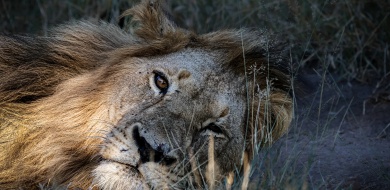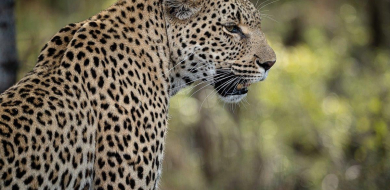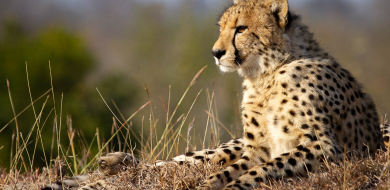Shoot for the Stars: Part One
on Jul 13, 2016Observing the Southern night skies from Private Game Reserves such as Sabi Sabi can be an incredible experience, but even though we see many more stars than in most places in the world due to the lack of major light pollution, the eyes cannot capture the full glory of our galaxy the way that your camera can.
In this photographic tip, I’d like to share with you some ideas and techniques for capturing the stars wherever in the world you may find yourself.
What you’ll need is the following:
- A “Stellar” location. Scouting out a suitable location for stargazing and astrophotography is one of the most important aspects of this type of image creation. It doesn’t necessarily have to be in a game reserve, although that does help considerably. Look for foreground focal points such as a tree, rocks, rivers or mountain/rocky outcrops. This will help lend perspective to your final image.
- A sturdy tripod, preferably one that has an easily maneuverable ball-head and the ability to have your camera positioned in portrait orientation if need be. It is also helpful to have one that can have a weight hang from it for extra stability in windy environments. I use a Sirui carbon fibre tripod. It has never let me down and proven incredibly versatile in any landscape photography situation.
- A wide aperture wide angle lens. The better the lens, the better the results will be in terms of the amount of light gathered and the way in which it handles the high ISO noise of these long exposures. Kit lenses do reasonably well, but they will not ”wow” you so keep this in mind. A minimum aperture of f4 is acceptable, but f2.8 or lower would be considerably better for light gathering and as wide as possible is always best, anywhere from 24mm to 10mm.
- Your camera of choice. Full Frame cameras with larger sensors often produce ‘cleaner’, more detailed results, but really any DSLR, mirrorless or micro 4:3 camera will work, provided they can be remotely triggered or have the ability to achieve 30 sec exposures.
- A remote trigger. This of course optional, but handy in the sense that it removes all camera shake from the equation.
- Spotlight, flashlights, headlamps etc.
There are many different methods to capture the stars and a little research into the subject may reveal one that works for you best, but for the purposes of this tip, I will offer to you one that I use a great deal and achieves the best results with minimum effort. The settings I used are specific to my equipment and so you must play around with yours in order to achieve the best results. Of course it goes without saying that the real difference to your star photography will come in the way that the RAW files are edited as the results straight out of camera may not be exactly what you envision. At the end of the day photography is art and thus not always meant to be the most accurate representation of what was seen, but rather an artistic expression to best tell the story you had in mind when capturing the scene. In the images below, I will have the before and after representations of the image as well as the settings used to capture them and a short description of the scene itself. I hope they will inspire you to be more creative in your own astrophotography.
Scene 1: Panoramic Stitch
This scene was created by stitching together 8 portrait orientated images into one panoramic image which I really like. The golden glow on the horizon was a result of the distant light pollution from the Huntington Village outside of our reserve, but it creates a lovely effect. It is amazing how much light a bright lens such as the Sigma f1,4 Art lens can capture.


Nikon D750 & Sigma 20mm f1.4 Art Lens
Shutter Speed: 30 sec ,5 sec self-timer
Aperture: f1.6
ISO: 1600
WB: Incandescent
Scene 2: Star Trail
Here I attempted a relatively short star trail created by a 5 minute exposure. Isn’t it incredible how much movement there is in the sky in only 5 minutes? You will notice in the Before photo that there was a bit of light pollution from one of our lodges, something I removed for the final image.
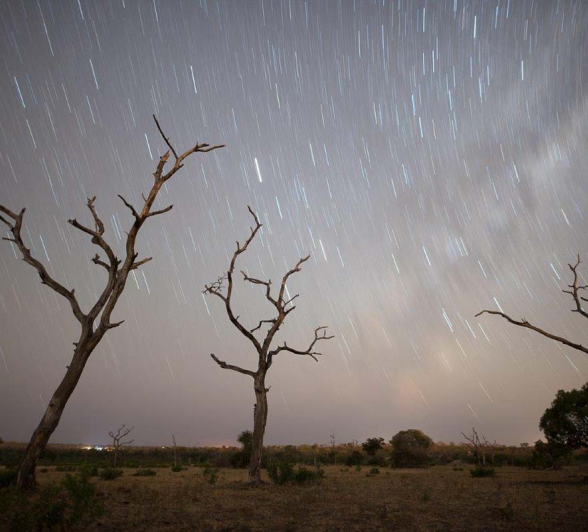
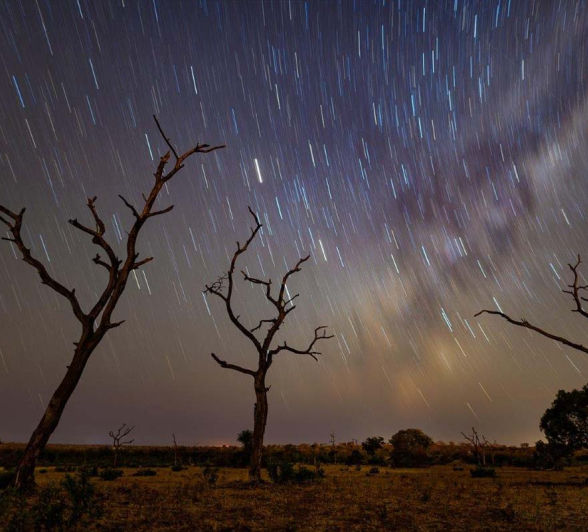
Nikon D750 & Sigma 20mm f1.4 Art Lens
Shutter Speed: 714 sec (5 min) ,5 sec self-timer
Aperture: f1.4
ISO: 200
WB: Incandescent
Scene 3: Stars by Moonlight
In this scenario there was a crescent moon above us and I knew that this would emit enough light to give the image an almost daylight appearance. I feel it worked out rather well and the detail I was able to capture at a wide open aperture of f1.4 was just astounding!
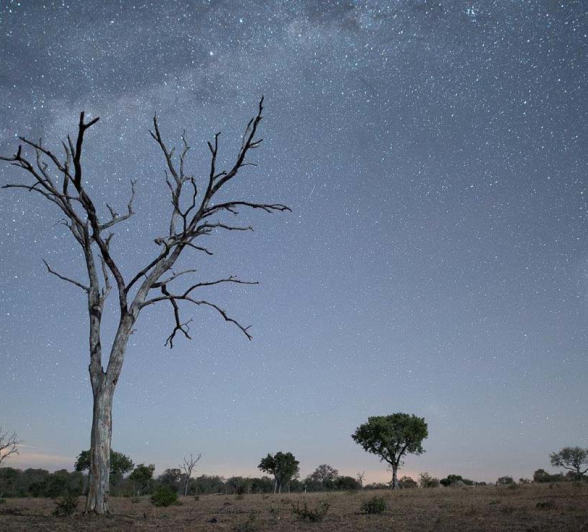
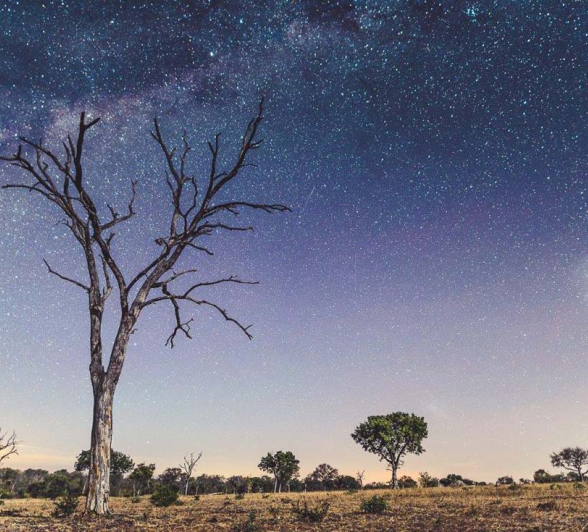
Nikon D750 & Sigma 20mm f1.4 Art Lens
Shutter Speed: 30 sec ,5 sec self-timer
Aperture: f1.4
ISO: 2000
WB: Incandescent
In the next Photographic Tip, I will take you through the editing adjustments of one of the above images.
Until next time...stay focused!
Mike Palmer (Bush Lodge Ranger)

